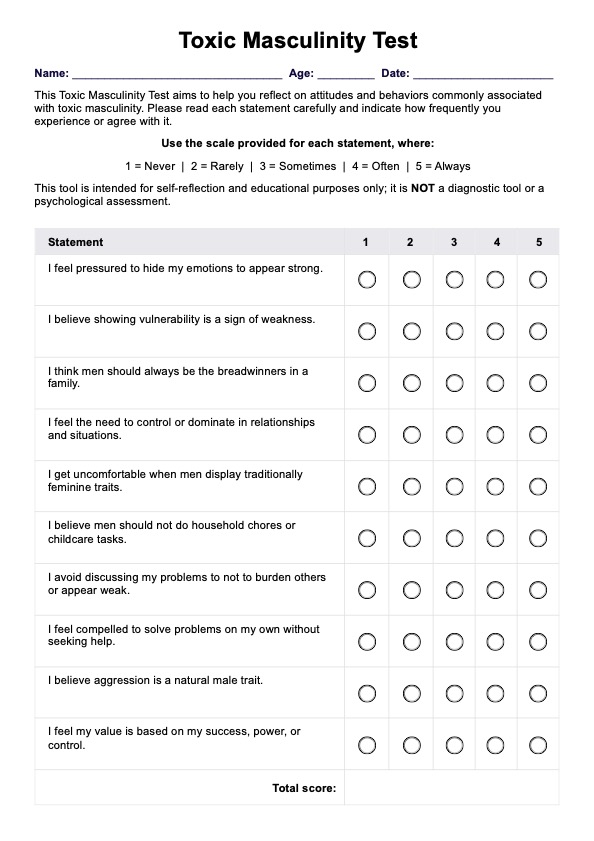Signs include avoiding emotional expression, using aggression to solve problems, and adhering to strict gender roles.

Toxic Masculinity Test
Discover how our Toxic Masculinity Test can help identify and address harmful behaviors, promoting healthier masculinity norms.
Use Template
Toxic Masculinity Test Template
Commonly asked questions
Dominance, emotional repression, and aggression are often cited as key elements.
Fragile masculinity refers to anxiety felt by men who believe they are not living up to societal standards of manhood or whose masculine identity is being questioned or threatened.
EHR and practice management software
Get started for free
*No credit card required
Free
$0/usd
Unlimited clients
Telehealth
1GB of storage
Client portal text
Automated billing and online payments











